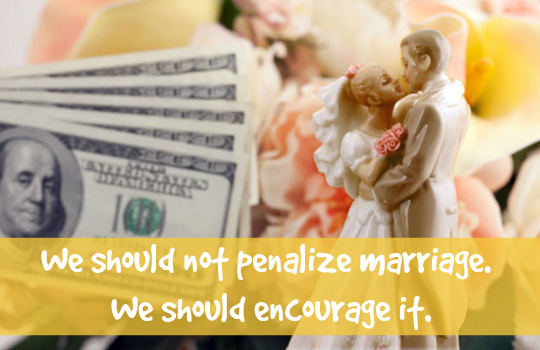Federal welfare programs have contributed to the decline in marriage in America. Most of us have known that, but it was helpful to see the research by Robert Rector at the Heritage Foundation to explain this in detail.
How the War on Poverty Has Hurt American Marriage Rates was the title of his article. He explains that it is no accident that the decline in marriage began with President Johnson’s War on Poverty fifty years ago. When the War on Poverty began, there was only one welfare program. Now they are dozens.
While it is true that married couples can receive some welfare from these programs, most of them are aimed at single-parent households. These means-tested programs promote single parenthood in two ways. First, they enabled single parents to survive and thus reduced the financial need for marriage. Second, these programs actually penalize low-income parents who do marry.
Robert Rector provides many examples. Here is one. A single mother with two children earning $15,000 per year would receive around $5,200 per year in food stamp benefits. If she married a father with the same earnings level, her food stamps would be cut to zero.
The federal government has more than 80 means-tested welfare programs that provide cash, food, housing, medical care, and other social services. Each of these programs has a marriage penalty attached to them. These programs create a significant financial disincentive to getting married.
Consider this scenario. A single mother who earns $20,000 per year marries a man who earns the same amount. The married couple will lose about $12,000 a year in welfare benefits. This makes it economically irrational for low-income couples to marry.
There are obvious solutions. Congress should begin to reduce welfare’s anti-marriage penalties incrementally. We should not penalize marriage. We should encourage it.
 Listen Online
Listen Online Watch Online
Watch Online Find a Station in Your Area
Find a Station in Your Area









 Listen Now
Listen Now Watch Online
Watch Online
